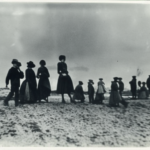The Great Influenza: The Epic Story of the Deadliest Plague in History
In “The Great Influenza: The Epic Story of the Deadliest Plague in History,” author John M. Barry takes readers on a gripping journey through the devastating influenza pandemic of 1918. From the origins of the virus to its global impact, Barry delves into the scientific, political, and social aspects of the outbreak, providing a comprehensive account of one of the deadliest plagues in human history.
The Origins of the Virus
Barry begins by exploring the origins of the influenza virus, tracing its roots to a military camp in Kansas during World War I. He highlights the challenges faced by scientists in identifying and understanding the virus, as well as the initial skepticism surrounding its severity. Through meticulous research and interviews with experts, Barry paints a vivid picture of the virus’s rapid spread and its devastating impact on communities worldwide.
The Global Impact
As the influenza virus spread across the globe, Barry illustrates the chaos and fear that ensued. He describes the overwhelmed healthcare systems, the shortage of medical supplies, and the desperate attempts to contain the outbreak. From the overcrowded hospitals in the United States to the ravaged trenches of World War I, Barry captures the sheer scale of the pandemic and its profound effect on society.
The Scientific Response
Barry delves into the scientific response to the influenza pandemic, highlighting the tireless efforts of researchers and physicians to understand and combat the virus. He explores the groundbreaking work of scientists such as Paul Lewis, who made significant strides in identifying the influenza virus and developing a vaccine. Barry also examines the role of public health officials and their attempts to implement preventive measures, such as quarantine and isolation, in the face of overwhelming challenges.
Throughout the book, Barry emphasizes the importance of scientific collaboration and the exchange of information in combating the influenza pandemic. He underscores the need for transparency and open communication between scientists, policymakers, and the public, stressing that the lack of such cooperation can have dire consequences.
Key Takeaways:
- The influenza pandemic of 1918 was one of the deadliest plagues in human history, claiming the lives of millions worldwide.
- The origins of the virus can be traced back to a military camp in Kansas during World War I.
- The global impact of the pandemic led to overwhelmed healthcare systems, shortages of medical supplies, and widespread fear and panic.
- The scientific response to the influenza pandemic was marked by groundbreaking research, the development of vaccines, and the implementation of preventive measures.
- Collaboration and open communication between scientists, policymakers, and the public are crucial in effectively combating future pandemics.
“The influenza virus did not kill the young and robust of the world. It brought them to death’s door and pushed them through.”
– John M. Barry
In “The Great Influenza: The Epic Story of the Deadliest Plague in History,” John M. Barry provides a compelling account of the 1918 influenza pandemic. Through meticulous research and captivating storytelling, Barry brings to life the devastating impact of the virus and the heroic efforts of those who fought against it. This book serves as a stark reminder of the importance of preparedness, collaboration, and scientific advancement in the face of future pandemics.












